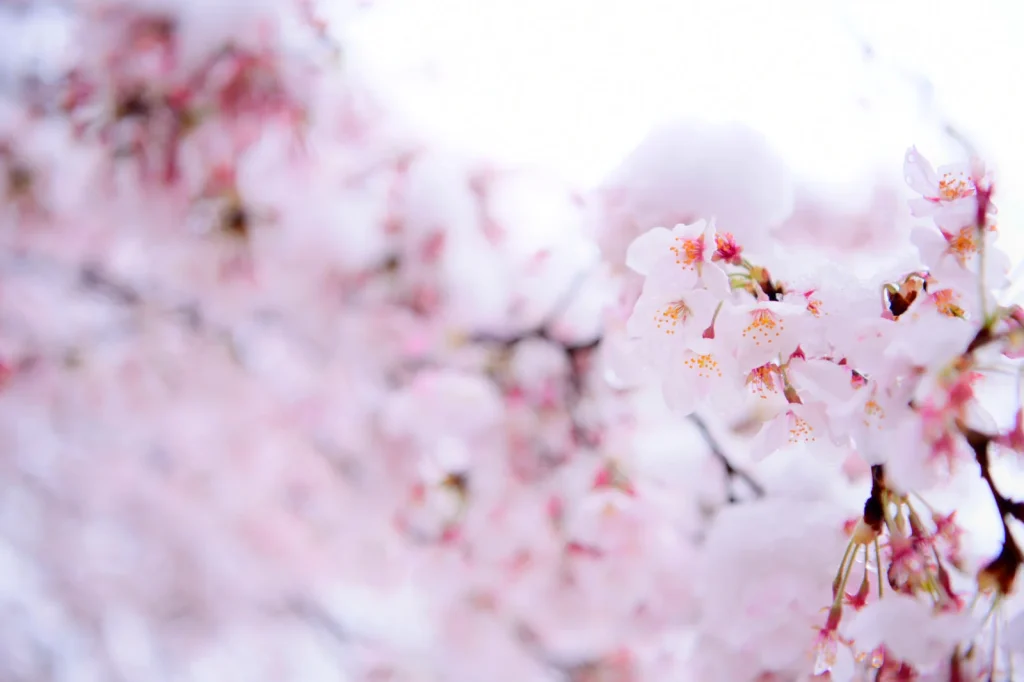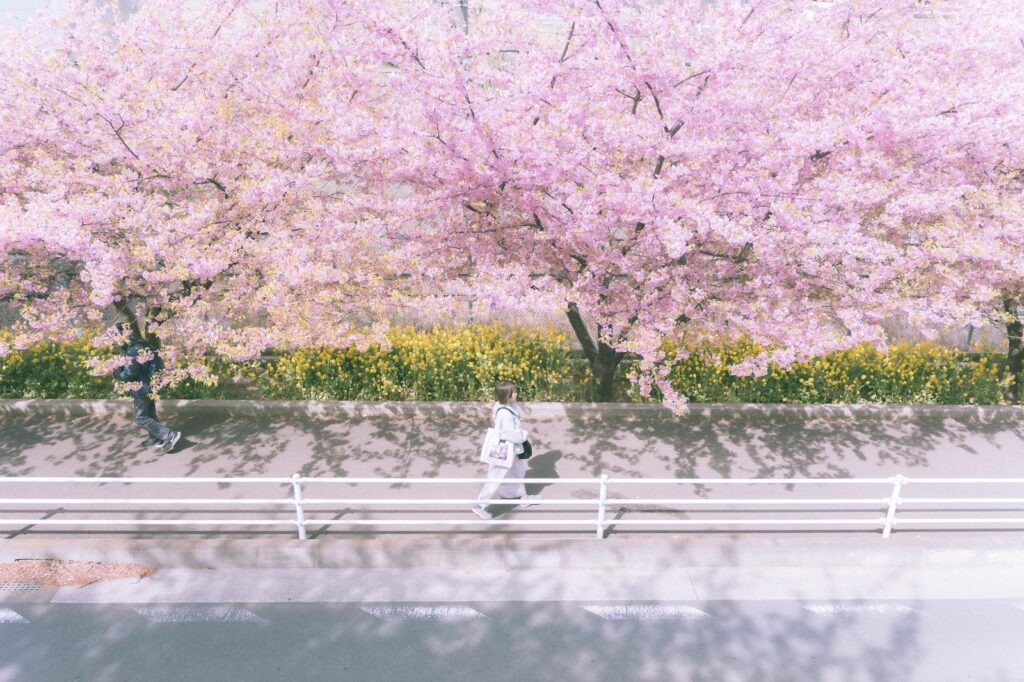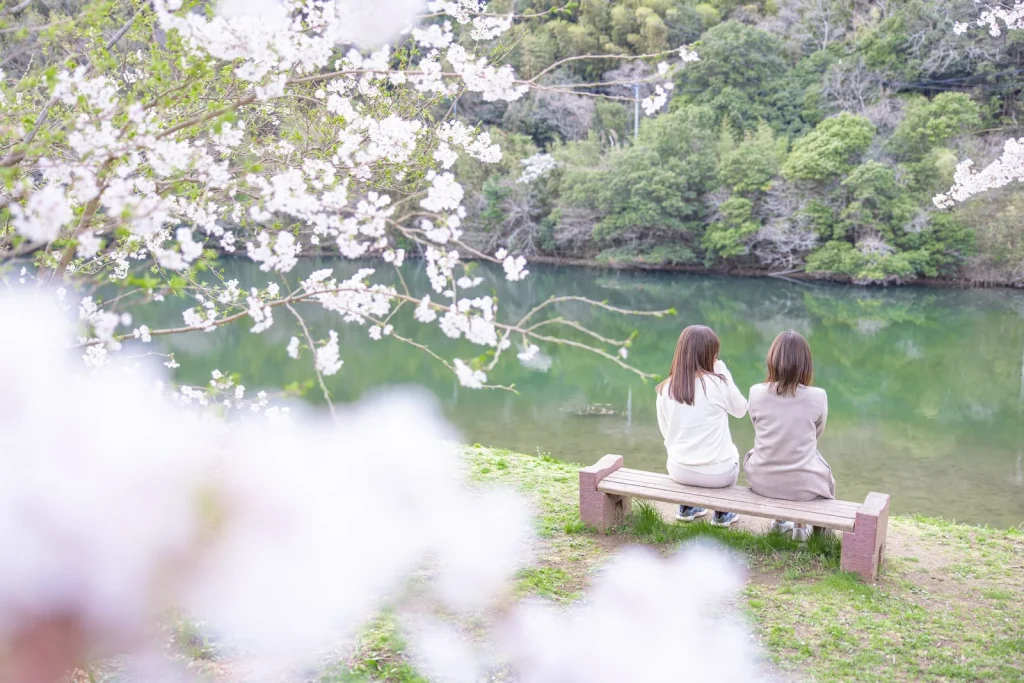Japan’s cherry blossoms, or “sakura,” are not just flowers; they are a cultural phenomenon, a fleeting yet profound symbol of beauty, transience, and the arrival of spring.
The tradition of cherry blossom viewing, known as “hanami,” is a cherished practice that brings people together to celebrate the ephemeral beauty of these delicate blossoms.
In this article, we embark on a journey through the enchanting world of cherry blossom viewing in Japan, exploring its historical roots, cultural significance, and the mesmerizing experiences it offers.
The Dance of Petals: Understanding Sakura

Cherry blossoms, scientifically known as “Prunus serrulata,” bloom in spring, typically between March and May, depending on the region and weather conditions.
The blossoms, with their pale pink hues, symbolize the arrival of warmer weather and the renewal of life.
The most iconic cherry blossom variety in Japan is the Somei Yoshino, with its five-petaled flowers that create a breathtaking spectacle when in full bloom.
Origins of Hanami: Historical and Cultural Roots
The tradition of hanami has deep historical roots, dating back over a thousand years. It is believed to have originated during the Nara Period (710–794) when aristocrats admired plum blossoms.
Over time, cherry blossoms gained prominence, and by the Heian Period (794–1185), hanami had become a popular custom among the imperial court.
During the Edo Period (1603–1868), the practice of hanami spread beyond the aristocracy to the general public.
People from all walks of life eagerly awaited the cherry blossoms, organizing festive gatherings with food, drinks, and music beneath the blooming trees.
This democratization of hanami marked a shift towards a more inclusive celebration of nature’s beauty.
Sakura and Symbolism: Beauty, Transience, and Renewal

Cherry blossoms hold profound symbolic significance in Japanese culture. The concept of “mono no aware,” an appreciation for the impermanence of beauty and the melancholy that accompanies it, is embodied in the fleeting nature of sakura.
The blossoms’ brief existence reminds people to cherish the present moment and appreciate the beauty that surrounds them.
Sakura is also associated with new beginnings and the start of the school and fiscal year in April. The blossoms’ ephemeral nature mirrors the ephemeral nature of life itself, making hanami a poignant reflection on the passage of time.
Hanami Today: A National Celebration
In contemporary Japan, hanami has evolved into a nationwide celebration, drawing locals and tourists alike to parks, gardens, and historical sites.
Cities like Tokyo, Kyoto, and Osaka become adorned with pink and white blooms, creating a visual spectacle that attracts millions of visitors.
The practice of hanami extends beyond daylight hours, with “yozakura” referring to nighttime cherry blossom viewing.
Illuminated cherry blossoms against the night sky create a magical atmosphere, and many parks and landmarks host evening hanami events.
Prime Spots for Hanami: Where Nature Meets Culture
Several locations across Japan are renowned for their picturesque cherry blossom displays.
In Tokyo, Ueno Park and Chidorigafuchi are popular hanami spots, offering a blend of natural beauty and cultural attractions.
Kyoto’s Maruyama Park, with its iconic weeping cherry tree, is a symbol of the city’s hanami traditions.
Himeji Castle in Hyogo Prefecture provides a stunning backdrop for cherry blossom viewing, as does Hirosaki Castle in Aomori, where the cherry blossoms create a breathtaking tunnel of pink and white petals.
Hanami Etiquette: Respecting Tradition and Nature
Participating in hanami involves observing certain etiquettes to ensure an enjoyable experience for everyone.
It is customary to bring a picnic mat, enjoy food and drinks, and appreciate the blossoms in a spirit of camaraderie. Many people engage in “hanami parties,” celebrating under the blooming trees with friends, family, or coworkers.
Respecting nature is integral to hanami etiquette. Visitors are encouraged not to pick the blossoms, as this can damage the trees and disrupt the enjoyment of others.
Additionally, proper waste disposal is crucial to maintaining the pristine beauty of the hanami sites.
Beyond the Blooms: Cultural Events and Festivities

Cherry blossom season is not limited to flower viewing alone; it inspires a myriad of cultural events and festivities.
Traditional tea ceremonies, musical performances, and art exhibitions take place during hanami season, providing a deeper immersion into Japan’s cultural heritage.
In some regions, the arrival of cherry blossoms is celebrated with festivals known as “matsuri.”
These festivals feature parades, food stalls, and traditional performances, creating a vibrant and joyous atmosphere.
Challenges and Conservation: Preserving Sakura for Future Generations
While hanami is a beloved tradition, it is not without challenges. Climate change and unpredictable weather patterns can affect the timing and duration of cherry blossom blooms.
Conservation efforts are underway to protect sakura trees and preserve their beauty for future generations.
Hanami in a Global Context: Shared Appreciation for Nature’s Beauty
The allure of cherry blossoms extends beyond Japan, captivating people worldwide.
Many countries with a temperate climate have introduced sakura trees, creating their own cherry blossom festivals.
This global celebration reflects a shared appreciation for the beauty of nature and the cultural significance embedded in cherry blossoms.
Conclusion: A Timeless Celebration of Beauty and Renewal
Cherry blossom viewing, with its roots in ancient history, continues to be a cherished practice that unites people across generations.
Hanami transcends the simple act of flower viewing; it is a celebration of life, beauty, and the cyclical nature of existence.
As the delicate petals of sakura dance in the spring breeze, hanami stands as a testament to Japan’s deep connection to nature and its enduring commitment to preserving the cultural legacy of cherry blossoms.



コメント